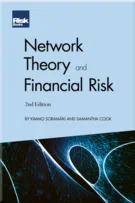Insights on Banks’ Recourse to Behavioural Models from a Focused IRRBB Stress Test
Federico Pierobon
Introduction
Insights on Banks’ Recourse to Behavioural Models from a Focused IRRBB Stress Test
Implementing Regulatory Guidance on IRRBB Behavioural Models: Challenges and Opportunities
The Stakeholders of Interest Rate Risk Behavioural Models
Governance of Behavioural Models
The Nature of IRRBB and Typical Metrics Employed
A Framework for Developing NMD Behavioural Models
The Literature on NMD Behavioural Models
Interest Rate Risk of Non-maturity Bank Accounts: From Marketing to Hedging Strategy
NMDs and IRRBB: A Methodological Proposal for a Behavioural Model
NMD Modelling: A Financial Wealth Allocation Approach
A Benchmark Framework for NMDs: An Application
NMD Behavioural Models Used in Marketing
The Validation of NMD Behavioural Models
The Choice of Maturity Profile in NMD Behavioural Models
Acknowledging the Elephant in the Room: The Mismatch Centre
Prepayment Risk Modelling for ALM, Finance and FTP: A Survival Model
Modelling of Prepayment on Fixed Rate Residential Mortgages: A Logistic Regression Approach
A Simple Approach to Modelling Prepayment Events
Integrating Credit Risk within the ALM Framework
Modelling Committed Credit Lines
Accounting of the Sight Deposit and Hedging
In 2017, the European Central Bank (ECB) conducted the sensitivity analysis of interest rate risk in the banking book (IRRBB), the 2017 supervisory stress test for banks under its direct supervision. A total of 111 banks domiciled in all euro area jurisdictions were involved. Banks’ exposure to IRRBB was measured under both net interest income (NII) and economic value of equity (EVE) perspectives. Banks were asked to simulate the impact of six heuristic instantaneous interest rate shocks: two parallel shifts of +/–200bp; three shocks calibrated upon guidance from the Basel Committee of Banking Supervision (see BCBS, 2016); and a return of risk-free yields to their end-2010 levels. The main results of the exercise were reported in ECB (2017).
Banks’ recourse to behavioural models in their asset and liability management (ALM) was subject to dedicated analyses with the aim of benchmarking existing practices and detecting potential sources of vulnerability. The exercise focused on the assessment of models of non-maturing deposits (NMDs) and loan prepayment. The data collection and quality assurance activities also touched upon other model types, such as those employed by banks to map
Copyright Infopro Digital Limited. All rights reserved.
As outlined in our terms and conditions, https://www.infopro-digital.com/terms-and-conditions/subscriptions/ (point 2.4), printing is limited to a single copy.
If you would like to purchase additional rights please email info@risk.net
Copyright Infopro Digital Limited. All rights reserved.
You may share this content using our article tools. As outlined in our terms and conditions, https://www.infopro-digital.com/terms-and-conditions/subscriptions/ (clause 2.4), an Authorised User may only make one copy of the materials for their own personal use. You must also comply with the restrictions in clause 2.5.
If you would like to purchase additional rights please email info@risk.net








